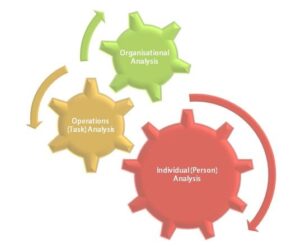
Without proper analysis, your teams will waste a lot of time and effort in solving the wrong problems or switching from one software to another. Before finding solutions, you need to have a broader picture of the operations involved within a business that need to be revised to improve process efficiency. When we talk about Business Operations Analysis (BOA), don’t confuse it with simple business analysis which involves any problem or need in an organization, which could involve financial controls, market research, hiring practices, and cost-cutting. Instead, BOA focuses only on the core processes of an organization. An understanding of business operations analysis is crucial to meet the criteria.
A very simple definition of business operations analysis could be the process that determines if the operation is actually organized in a manner that complies with terms of the business plan and is helping the company achieve its goals.
Improvement in operations; Leading to business efficiency
Studies of many successful companies has often shown that they succeeded not only because of better ideas or better business models. But also, because they constantly refined their processes through business process modeling.
A slight improvement in a single activity here and another one there leads to an overall better process and those little refinements help organizations run efficiently and give the edge over their competitors.
Processes Involved in BOA
The following are some guidelines for conducting an operational analysis. They can be considered as a “checklist” of things that should be included.
Describe the baseline against which you measure the investment’s performance. Is there an approved and up-to-date charter or program plan?
Describe the method you are using to measure and track cost, schedule and performance metrics.
Describe the investment cost, schedule, and performance baseline, and the management technique you are using to monitor metrics against the baseline.
Describe the investment’s management control process. What are the operational, mid-management and senior management policies for review and intervention?
Discuss the current performance of the investment.
How Is Business Operations Analysis Beneficial?
1. Increased profits: It can help improve the overall structure of the business by eliminating positions that are not necessary, creating new positions when there is a need.
2. Better decision making: Instead of relying on high-end consultancy firms to make big decisions for your organization, why not let the data do all the talking for you?
3. Competitive advantage: Businesses need to work considering the changing market conditions, this type of analysis at least on a yearly basis can often provide the chance to make changes in anticipation of what is projected to happen in the marketplace in the near future.
4. Streamlining data: All the data can be stored at a single place with the availability to all your employees and you can easily create backup and recovery for all data to ensure its safety despite natural disasters.
5. Better employee engagement: With business process analysis, managers can simulate workflows to identify if there are any improvements that can be made.
If you’re not on it yet, now is the time to do so otherwise you’ll get left behind. In one of the surveys done on the importance of operational analysis, it has been found that 70% of companies have started focusing on operation processes instead of consumer processes so it’s never too late for you to jump on the bandwagon.
BroadAxis understands the value of data which is why our focus is towards analyzing the data using effective Business Function Operation Analysis techniques and converting it into meaningful information for our clients.





